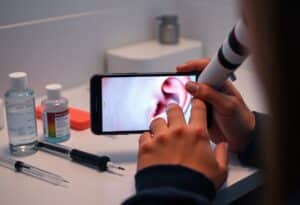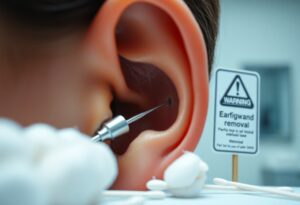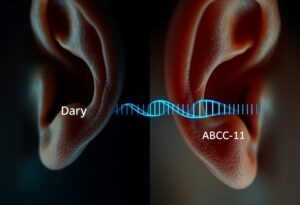There’s a growing discussion around ear hygiene, particularly for those who wear hearing aids. You may wonder if mechanical irrigation offers a safer alternative to cotton swabs in maintaining ear health. This post provides insights into the effectiveness and safety of mechanical irrigation compared to traditional methods, helping you make informed decisions about your ear care routine.
Key Takeaways:
- Mechanical irrigation may reduce the risk of earwax impaction, which is beneficial for hearing aid wearers.
- Cotton swabs can push earwax deeper and potentially harm the ear canal, leading to complications.
- Using irrigation can promote better ear hygiene without the drawbacks of cotton swab use.
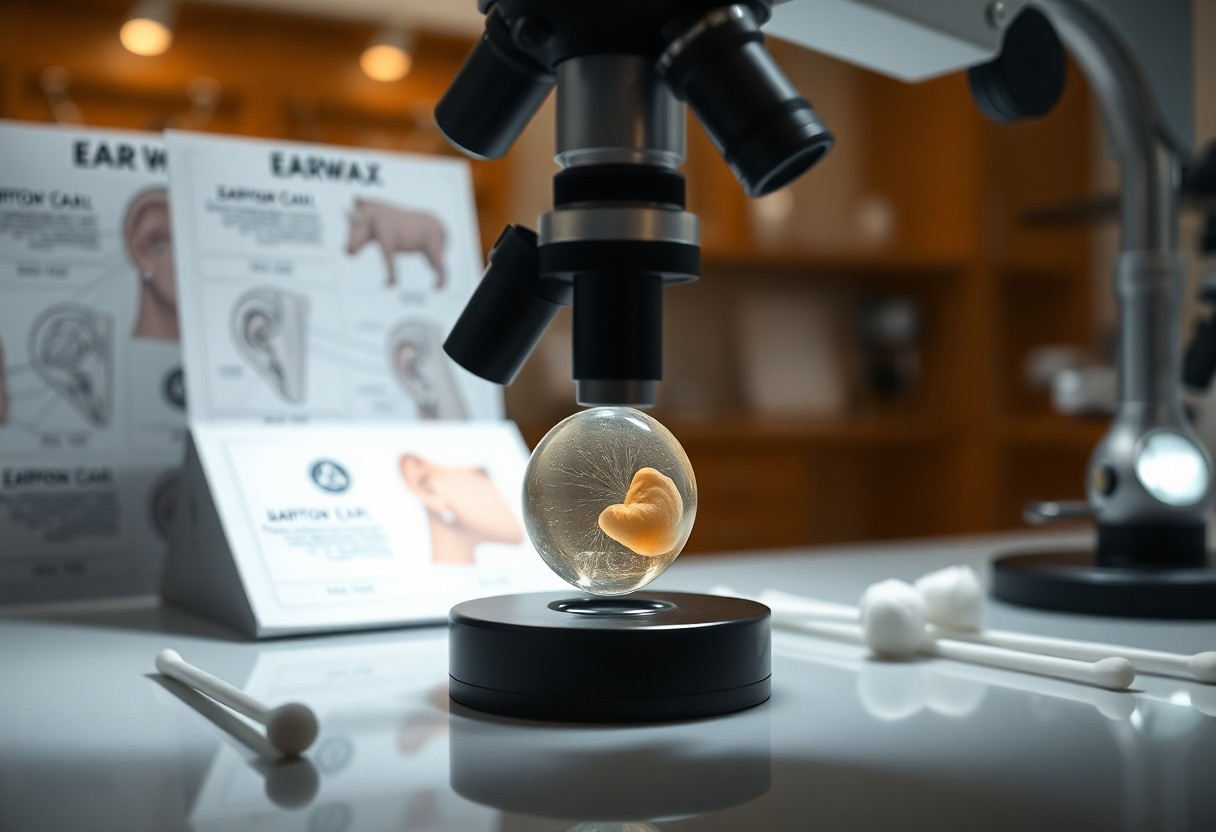
The Physics of Earwax: An Unseen Force
The Role of Earwax in Ear Health
Earwax, or cerumen, serves as a natural defense mechanism for your ears, trapping dust, debris, and microorganisms. It protects the ear canal from irritation and infection while maintaining moisture, which aids in preventing dry skin and itchiness. Its acidic nature further helps inhibit bacterial growth, making it an vital component of your overall ear health.
The Mechanics of Earwax Buildup
Ears typically have a self-cleaning mechanism that allows earwax to migrate outward naturally. However, factors such as frequent use of hearing aids, Q-tip misuse, or individual variance in earwax production can lead to obstruction. Inadequate cleaning and other lifestyle habits can exacerbate the buildup, leading to potential discomfort and hearing issues.
As you engage in daily activities, sound waves vibrate your eardrum, prompting natural earwax movement. However, inserting cotton swabs could push earwax deeper, negating the ear’s self-cleaning function. Additionally, certain conditions like excessive earwax production, narrow ear canals, or wearing hearing aids regularly may increase the likelihood of blockage. Studies indicate that approximately 6% of adults experience earwax impaction, highlighting the importance of understanding the mechanics behind earwax buildup to ensure optimal ear health.
Cotton Swabs: A Double-Edged Sword
The Popularity and Misuse of Cotton Swabs
Cotton swabs have become a household staple, often marketed for various uses, including personal hygiene. You might find yourself reaching for them to clean your ears, despite warnings against such practices. This widespread use has led many to overlook the potential dangers associated with their misuse, as they are frequently viewed as harmless tools in your bathroom arsenal.
Health Risks Associated with Cotton Swab Use
Using cotton swabs for ear cleaning can introduce several health risks, particularly for hearing aid wearers. Inserting a cotton swab into the ear canal can push earwax deeper, leading to impaction and potential damage to the ear structures. You might also face the risk of perforating the eardrum, which can result in pain and hearing loss.
Statistics highlight the alarming frequency of injuries from cotton swab use; the American Academy of Otolaryngology reports that around 4,000 people visit emergency rooms annually due to complications related to swab misuse. In addition to physical injuries, the notion that swabbing regularly keeps your ears clean is misleading. Over-cleaning can disrupt the natural production of earwax, leading to dryness and irritation. For hearing aid wearers, this mismanagement can compromise device effectiveness, bringing forth a cycle of discomfort and increased maintenance needs.
Mechanical Irrigation: A Technological Solution
How Mechanical Irrigation Works
Mechanical irrigation uses a gentle stream of water to remove earwax and debris from the ear canal. A specialized device directs the water flow in a controlled manner, effectively flushing out buildup without the risk of pushing wax deeper, which can happen with cotton swabs. You might experience a soothing sensation as the water cleanses your ears, making it a preferred choice for individuals conscious of their ear health.
Advantages of Using Mechanical Irrigation
Using mechanical irrigation provides several benefits for hearing aid wearers. Unlike cotton swabs, which can lead to injuries or impacted wax, irrigation allows for safe and efficient ear cleaning. You can maintain optimal hearing aid function and reduce risks of wax-related issues.
Mechanical irrigation ensures thorough cleaning, significantly reducing the risk of ear infections that can arise from improper cotton swab use. Studies show that ear irrigation can remove up to 90% of earwax in one session, leading to improved sound clarity for hearing aid users. Additionally, the non-invasive nature of this method minimizes discomfort and fosters a sense of cleanliness without the potential trauma associated with pushing wax further into the ear canal. This technique aligns with modern ear health practices, promoting safer and more effective maintenance for hearing aid users.
Direct Comparison: Mechanical Irrigation vs. Cotton Swabs
| Aspect | Mechanical Irrigation | Cotton Swabs |
|---|---|---|
| Effectiveness in Earwax Removal | Highly effective, flushes out earwax without pushing it deeper | Can push earwax further into the canal, leading to blockages |
| Safety for Hearing Aid Wearers | Generally safer, minimizes risk of damaging hearing aids | Increases risk of irritation or damage to hearing aids |
Effectiveness in Earwax Removal
Mechanical irrigation is designed to remove earwax thoroughly by flushing it out, which often results in more efficient cleaning compared to cotton swabs. Swabs can inadvertently compact earwax, complicating removal and increasing the chances of blockage or discomfort. This method ensures a cleaner ear canal, promoting overall ear health.
Safety for Hearing Aid Wearers
Mechanical irrigation poses less risk for hearing aid wearers compared to cotton swabs. Swabs can accidentally damage devices or irritate the ear canal, while irrigation effectively clears wax without direct manipulation that could lead to injury. This reduces your risk of experiencing complications related to hearing aids.
For hearing aid users, employing mechanical irrigation offers a reliable method to maintain ear hygiene without the associated risks of cotton swabs. Damage to the hearing aids can result from improper usage of swabs, with potential outcomes including malfunction or irritation. By choosing irrigation, you mitigate these risks and promote a healthier environment for your ears, ensuring that your hearing aids function optimally for longer periods.
Personal Experiences: Voices of Hearing Aid Users
Testimonials on Cotton Swabs
Your peers have shared mixed experiences with cotton swabs. Many report a sense of immediate relief after using them, but others describe incidents of earwax impaction that led to discomfort and increased visits to audiologists. The concern about damaging hearing aids from excessive wax buildup also weighs heavily on users’ minds, prompting some to reconsider their hygiene routines.
Feedback on Mechanical Irrigation
Users who have transitioned to mechanical irrigation often describe a significant difference in their ear health. Unlike cotton swabs, which may push wax deeper, mechanical irrigation effectively flushes out debris and wax without risking ear drum damage. Many report an enhanced clarity of sound and fewer issues with their devices after regular irrigation sessions.
Case studies show that regular users of mechanical irrigation have less frequent ear infections and reduced reliance on audiology services compared to those who stick with cotton swabs. One user noted, “Ever since I switched, my hearing aids perform consistently better, and I’ve had fewer blockages.” The overall consensus seems to lean towards a safer and more effective cleaning method that prioritizes both ear hygiene and device integrity. With advancements in irrigation technology, hearing aid users now have options that cater specifically to their unique needs.
Expert Opinions: Audiologists Weigh In
Audiologist Insights on Ear Care
Audiologists emphasize that proper ear care is crucial for hearing aid users. Many recommend avoiding cotton swabs, as they often push wax deeper into the ear canal, potentially causing blockages or damage. Instead, they advocate for methods that promote natural earwax expulsion, such as using mechanical irrigation, which can safely remove debris without risking injury to the delicate ear structures.
Recommendations for Hearing Aid Maintenance
To maintain hearing aids effectively, audiologists suggest regular cleanings and proper storage. Dust and moisture can impair performance, so using a designated hearing aid drying container can significantly extend their lifespan. Furthermore, routine checks for earwax accumulation in the device should be conducted to prevent malfunctions.
Regular maintenance is vital for optimal hearing aid performance. Cleaning the microphone and receiver openings with a soft cloth can help avoid sound distortion. Additionally, considering a scheduled professional cleaning at least once a year ensures that any deeper issues are identified early. Keeping your hearing aids in a safe, dry place overnight protects them from potential damage and preserves their functionality over time.
Best Practices for Ear Hygiene and Hearing Aid Care
Dos and Don’ts for Ear Hygiene
Adopt a gentle approach to ear hygiene. Use a soft washcloth to clean the outer ear and avoid inserting any objects into the canal. Keep your ears dry after bathing, and be vigilant about signs of irritation. Don’t use cotton swabs, as they push wax deeper, potentially causing blockages or damage.
Recommendations for Hearing Aid Users
Clean your hearing aids regularly using a soft, dry cloth, and avoid exposure to moisture. Store them in a dry, safe place to prevent damage and ensure maximum function. Update your audiologist about any changes in hearing aid performance, and check the batteries frequently.
Regular maintenance of your hearing aids involves more than just cleaning; it includes knowing when to replace parts like wax guards and batteries to ensure optimal performance. Using a dehumidifier can help mitigate moisture-related issues, enhancing the lifespan of your devices. Scheduling routine check-ups with your audiologist can address any concerns promptly, ensuring your hearing aids are always ready for clarity and comfort.
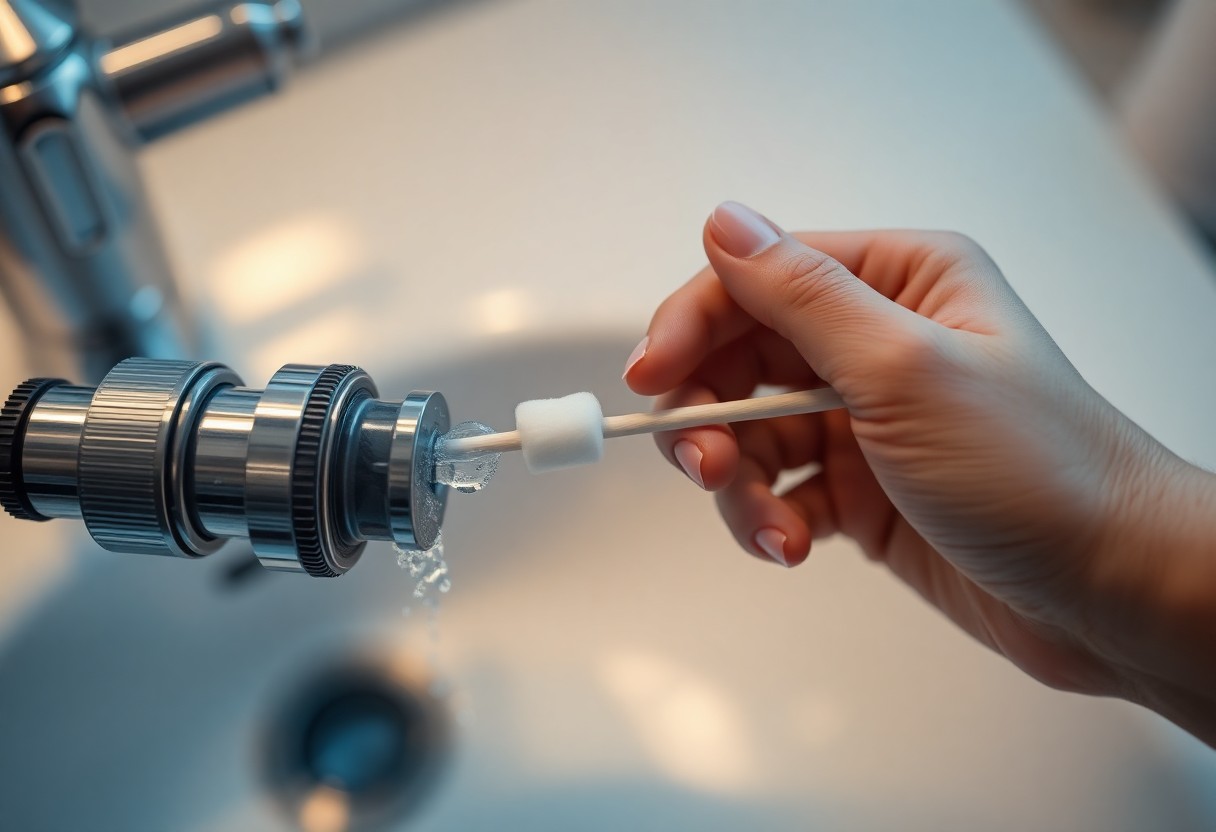
Beyond Ear Care: The Implications of Ear Health on Overall Wellbeing
The Connection Between Hearing Health and Quality of Life
Your hearing health significantly impacts your quality of life, shaping social interactions and emotional wellbeing. Those with compromised hearing may experience feelings of isolation or frustration in conversations. Effective hearing aids can enhance communication, leading to more fulfilling relationships and increased engagement in everyday activities.
Long-term Effects of Neglected Ear Hygiene
Neglecting ear hygiene can lead to severe consequences, including chronic infections, hearing loss, and balance issues. Earwax buildup may obstruct sound transmission and ultimately necessitate professional intervention. Over time, these issues can contribute to cognitive decline and negatively affect your mental health and social life.
Chronic ear infections resulting from poor hygiene can lead to permanent hearing loss, particularly in children whose auditory systems are still developing. Research shows that individuals with untreated hearing problems are at a higher risk for depression and anxiety. Ensuring proper ear care not only preserves your hearing but also supports overall mental and emotional wellness, making it a key component in maintaining a healthy lifestyle.
To wrap up
Upon reflecting, you should consider that mechanical irrigation may offer a safer alternative for hearing aid wearers compared to cotton swabs. Using cotton swabs can push wax deeper into the ear canal, risking damage to your hearing aids and your ears. Mechanical irrigation, which gently flushes out earwax, can more effectively clear your ears while minimizing the risk of injury. As a hearing aid wearer, prioritizing methods that safeguard your auditory health is vital, and opting for mechanical irrigation could enhance your overall experience.
FAQ
Q: Is mechanical irrigation safer for hearing aid wearers than cotton swabs?
A: Yes, mechanical irrigation is generally considered safer for hearing aid wearers. It helps prevent damage to the delicate components of hearing aids that can occur with the use of cotton swabs.
Q: How does mechanical irrigation work for ear cleaning?
A: Mechanical irrigation uses a controlled stream of water or saline to flush out earwax and debris from the ear canal, reducing the risk of injury compared to inserting cotton swabs.
Q: Can using cotton swabs harm hearing aids?
A: Yes, using cotton swabs can push earwax further into the ear canal and may damage hearing aids if the swab comes into contact with the device’s microphones or receiver.
Q: Are there any risks associated with mechanical irrigation?
A: While mechanical irrigation is generally safe, it can pose risks if performed improperly, such as ear infections or perforation of the eardrum, which emphasizes the importance of professional assistance.
Q: Should hearing aid users consult a professional before using mechanical irrigation?
A: Yes, hearing aid users should consult a healthcare professional to determine if mechanical irrigation is appropriate for their specific situation and to receive guidance on the procedure.

